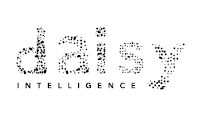
Start a Business Transformation Initiative with the Right AI Journey
 Daisy Intelligence
Daisy Intelligence
With organizations challenged to retain customers and outperform the competition, there is a greater need for efficiency than ever before. With AI technology, our clients are eliminating inefficient processes and are seeing significant time and labour savings as a result.
AI recommends and executes improved decisioning that supports organizations’ existing business initiatives or goals – i.e., AI may support with transforming merchandise planning processes to improve promotional effectiveness or streamlining inefficient claims management processes to reimburse customers faster. With AI becoming the leading key to success for retailers and insurers alike, organizations must prioritize the right automation journey.
This blog post explores the best practices that are most critical to our clients’ success on their AI journey. An implementation initiative that prioritizes top-down organizational alignment, building trust in the technology at all levels of the company, and developing and validating the early business case will foster long term success.
Organizational Alignment from the Senior Level
As aforementioned, AI technology is utilized to support an organizations’ vision for process automation. With automation taking over some of the most important internal processes, a successful automation journey involves endorsing the use of the technology from the top down and working to maintain continual alignment with the initiative. Without support from senior leadership, progress may slow or the initiative may even be entirely derailed.
Teams must report on results and learnings in detail as the technology begins to roll out across the organization. Sharing numerous and varied examples is critical to keeping the executive team engaged with the project – practical examples will connect with them and assist them as they provide internal teams with valuable guidance.
Organizational Alignment in Retail
Consider a promotion for a large holiday cake. With families gathering for the Holiday season, the merchant intuitively assumed that customers would purchase a large cake over smaller options. However, the AI demonstrated that the sales of the large cake were far less than that of the small – rendering the promotion ineffective. This is due to the lost opportunity to drive larger baskets with the sales of associated products.
With the sheer number of products on offer, it is challenging to know what will lead to the best promotion – making planning with intuition common among merchants. However, what may seem intuitive is not always reflective of what customers want and buy. In our example, the financial data demonstrated that human intuition was ineffective in the planning of the promotion – the smaller cake would have been the more impactful choice.
Human capabilities are limited, and are most often eclipsed by technology, when working with such large volumes of data. Prioritizing the use of the AI’s recommendations is a critical aspect of change management. Reporting these challenges and learnings back to the executive team will assert the importance of the technology in a more tangible way – in turn, enabling continual alignment as the scope of the initiative continues to grow.
Organizational Alignment in Insurance

Now, consider a low value claim for windshield damage. Without leveraging system capabilities, the insurer decided the claim can be paid out. This is a typical course of action for seemingly straight-forward claims of a low dollar amount. Due to labour and resource constraints, most insurers reserve investigative effort for higher value, materiality, and complexity claims that require more human touch.
Here, if utilized, the AI would have shown that the images of the damage submitted with the claim were identical to those submitted with another claim the year prior. The AI would have recommended that this claim not be paid due to suspected fraud.
Ultimately, AI sees what people cannot. With system capabilities fully leveraged, the fraud losses on this claim could have been avoided before they occurred. Though the losses on this claim may seem a negligible amount, with fraud continually going unchecked, losses add up significantly over time. This makes AI necessary to minimize the financial impact of fraudulent activity.
With detailed practical examples demonstrating the necessity of the technology, executive teams are now positioned to encourage the use of the system from the top-down – setting their organization up for greater success.
Delivering on the Value Proposition
Furthermore, as processes that have been in place for numerous years begin to change, users may become apprehensive and push-back against the organizational shifts. In addition to endorsing alignment from the top-down, a clear value proposition must be continually delivered on to encourage use and acceptance amongst system users. For example, this could be eliminating the rote, repetitive work involved in managing manual processes – delivering significant time savings.
Collecting feedback is also extremely critical and can be incorporated to improve overall system performance and usability. However, there will always be numerous reasons to resist the new system. Feedback must be listened to and can be implemented where appropriate, but users must also be encouraged to fully embrace the recommendations to achieve any real benefit.
Ultimately, it is important that users remain open minded as processes begin to differ from what was previously done. Though job roles will no doubt change, users will continue to take on important tasks that are not eligible automation – i.e., setting strategy and finding new ways to service customers. A focus on explainability and transparency at every stage of the journey and ensuring that recommendations maintain familiar while still providing value will support users in remaining open to the new capabilities.
Today, AI is supporting organizations in actioning their business transformation initiatives – streamlining inefficient internal processes and manual systems and enabling significant time savings.
However, AI implementation is not a trivial exercise and taking the right automation journey is critical. A journey that prioritizes aligning the executive leadership’s vision for automation and building trust in the technology across the organization has helped our clients see the success AI makes possible.
Explore practical steps to incorporate the Halo Effect with AI in your organization, download our whitepapers for retail and insurance.





